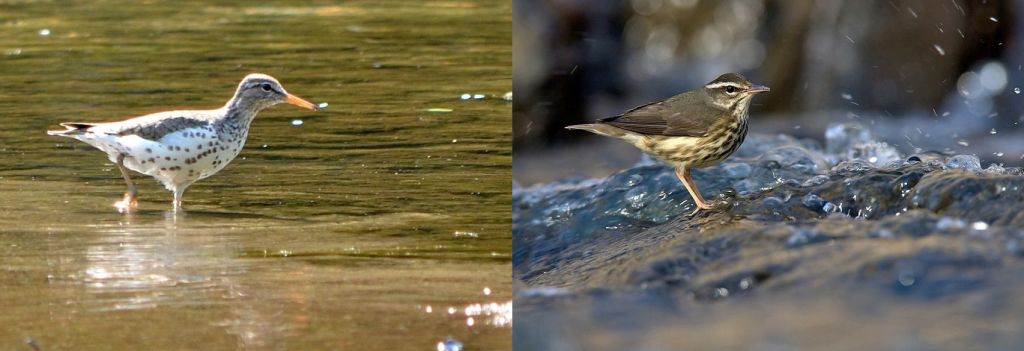
14 April 2021
One of the joys of early spring is finding the first Louisiana waterthrush (Parkesia motacilla) of the year as it forages along a stream and sings its loud distinctive song. The bird is so loud that we hear him first then look for movement along the water’s edge. He stands out because he constantly bobs his tail. In fact he bobs the entire back end of his body!
Just half a minute of this video illustrates what I mean.
A few weeks later the spotted sandpiper (Actitis macularius) arrives to walk the water’s edge bobbing the entire back end of his body, too.
Same habitat, same movement. Is there some advantage in drawing attention to one’s back end? Why do these birds wag their tails? I found a partial answer at All About Birds:
… waterthrushes don’t actually wag the tail, they dip (or teeter) the entire rear of the body by moving their ankle joints. This motion is very much like the bobbing of Solitary and Spotted Sandpipers, which share their wetland habitats. It’s been suggested that this habit might either help them avoid scaring off their prey or possibly startle their prey into motion.
— All About Birds, overview of Louisiana Waterthrush
There’s plenty of time to watch them teeter in the weeks ahead. My first Louisiana waterthrush of 2021 was at Cedar Creek Park in Westmoreland County on 30 March. I expect the first spotted sandpiper next week.
Bonus! Here’s a closeup of a Louisiana waterthrush singing:
Other birds pump their tails including eastern phoebes, palm warblers, hermit thrushes, wagtails and pipits, but it’s not quite the same motion. More on that later.
p.s. On the West Coast in winter or the Alaskan tundra in summer, you may encounter another shorebird that bounces its back end: the wandering tattler (Tringa incana).
Spotted my nemesis bird (Wandering Tattler) shaking its buns! pic.twitter.com/gkPvz3j4b3
— Nicholas Belardes (@nickbelardes) May 7, 2021
(photos from Wikimedia Commons; click on the caption to see the originals)
What a wonderful post! Thank you. Have a great Wednesday.